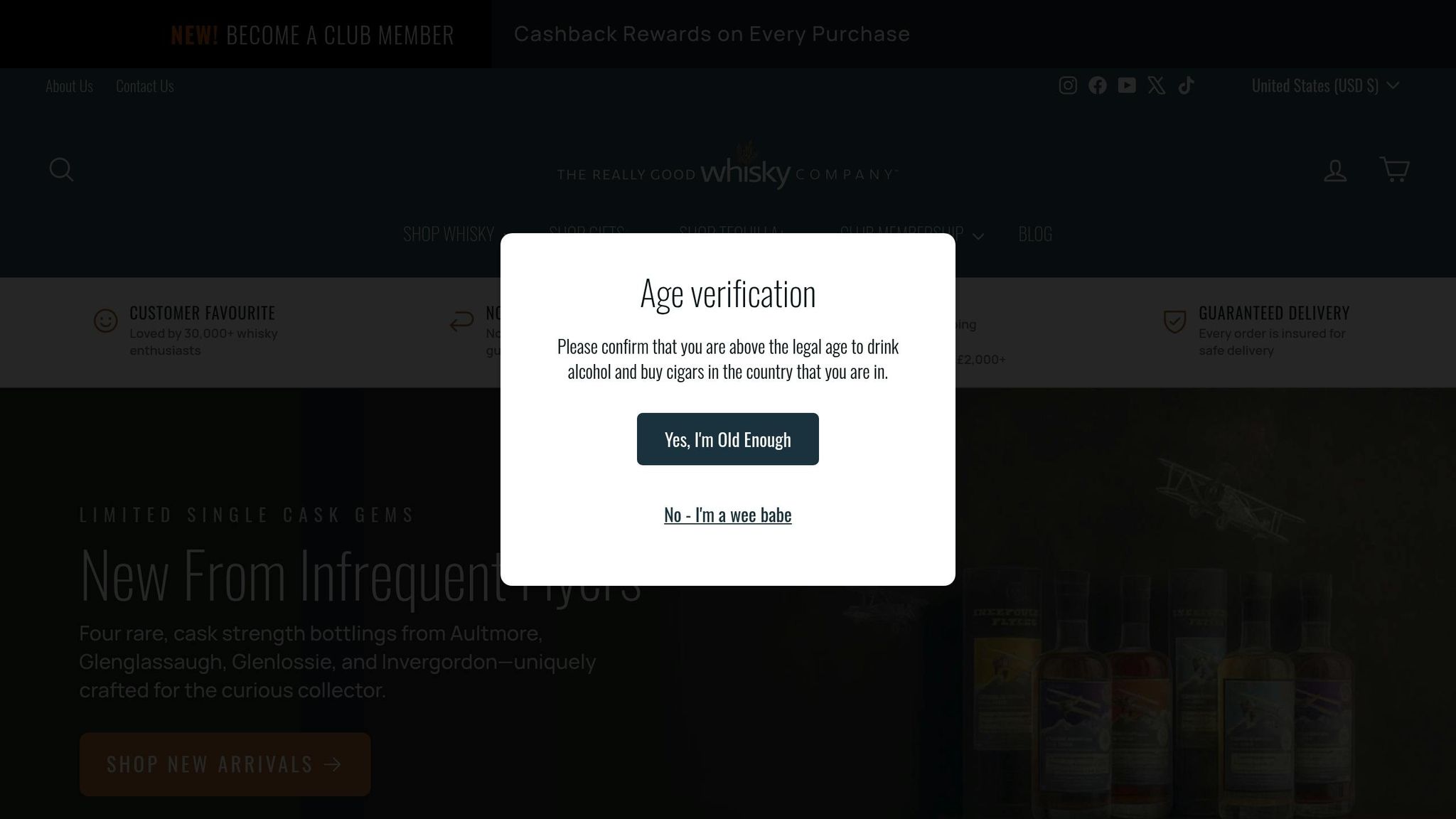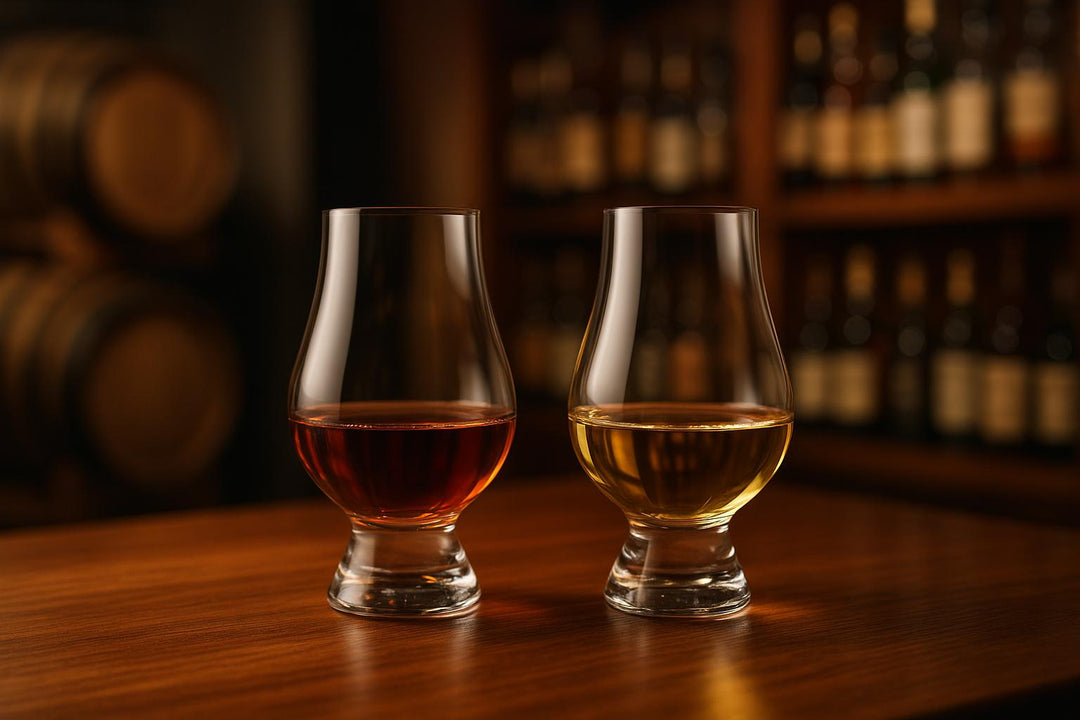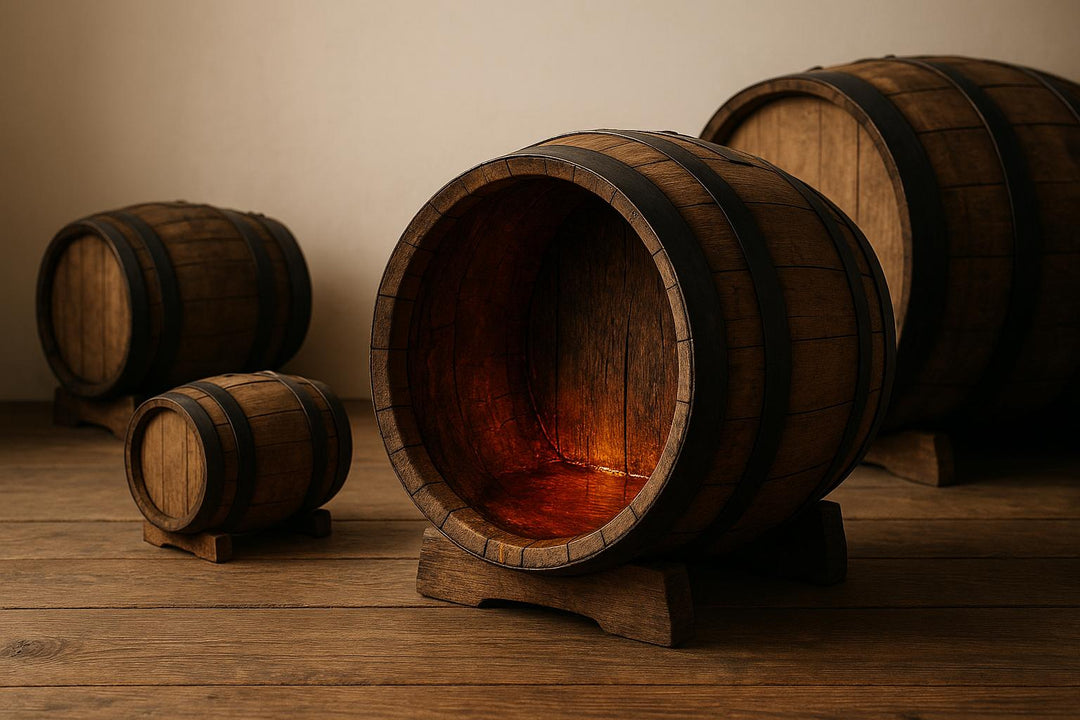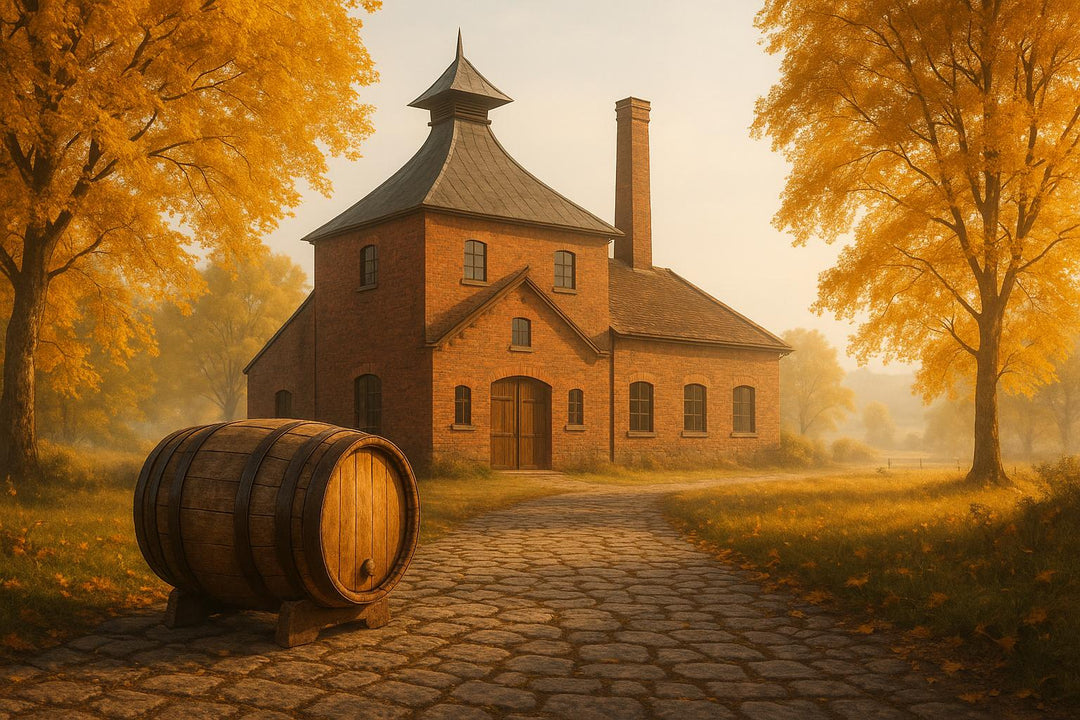The whisky collector market has transformed into a lucrative investment space, with rare bottles delivering strong returns over the past decade. Between 2011 and 2021, rare whisky investments surged by 428%, and prices for collectible bottles climbed 322%. Even in 2023, whisky prices rose by 13%, outperforming fine wine. Factors like limited production, high-profile auction sales, and growing demand from Asia and North America drive this growth.
Key points:
- Rare whisky achieved an average annual return of 13.4% over the last ten years.
- Scotch whisky exports in 2023 reached £5.6 billion, shipping 1.35 billion bottles globally.
- Japanese whisky continues to grow, with its market projected to nearly double by 2033.
- Digital platforms and blockchain technology make whisky investment more accessible and secure.
Understanding market trends, regional preferences, and economic factors helps collectors make informed buying decisions.
Behind the Scenes: 2024 in Retrospect with Ben Lancaster & Tommy Major
Historical Price Data for Collectible Whiskies
Over the last ten years, the collectible whisky market has seen a dramatic rise in prices, with certain bottles outperforming more conventional investment options. The Knight Frank Luxury Investment Index reports that investment-grade Scotch whisky has soared by over 560% during this period, making it one of the most lucrative alternative investments [5]. This surge set the stage for record-breaking sales in the years that followed.
The market has gone through distinct cycles of growth and consolidation. Rare bottle prices hit their peak around 2018, with the record for the most expensive bottle sold being broken twice that year and again in 2019 [7]. After a period of stabilisation, prices experienced another leap in 2021–2022 [7].
A notable example of this growth is Matthew Robson’s Macallan collection. In 2020, Mark Littler LTD facilitated the sale of a vertical collection of Macallan 18-year-old bottles for £44,000. This collection, consisting of 28 bottles gifted annually by Matthew's father on his birthday, still had its original packaging. The sale attracted significant media attention, from the BBC to international outlets in India and the USA [7].
Major Price Changes in Rare and Collectible Whiskies
The whisky market has seen some extraordinary price increases in recent years. Between 2022 and 2023, The Dalmore 18 saw its price jump by 140%, rising from £125 to £300 [6]. Similarly, GlenDronach and Glenrothes experienced price hikes of 44% and 53%, respectively, during the same period [6].
Bottles from limited edition runs or those produced before 2000 - especially pre-1990s releases - continue to command the highest premiums [7]. Among single malt brands, The Macallan remains a standout favourite, though prices for modern releases have softened since 2022. Distilleries like Port Ellen, Bowmore, Laphroaig, and Ardbeg also maintain strong appeal among collectors [7].
Whiskies from silent distilleries - those no longer in operation - fetch particularly high prices at auction [4]. Single cask and batch releases are especially prized for their rarity, often achieving exceptional results in the secondary market [4].
The auction scene has produced some remarkable sales, such as the Karuizawa 1960 The Archer, which sold for $140,140, and the Yamazaki 55-year-old, which reached an impressive $256,162 [1].
Regional Price Growth Patterns by Whisky Type
Looking at broader market trends, regional variations offer additional insights into whisky price dynamics. Japanese whisky has been a standout performer. By 2024, the global Japanese whisky market was valued at USD 923.34 million, with projections suggesting it could grow to USD 1,809.2 million by 2033, reflecting a compound annual growth rate of 7.76%. Exports have surged by 60% over the past five years, and limited-edition or aged Japanese whiskies are now fetching over 200% higher prices in the secondary market. In the U.S. alone, imports of Japanese whisky have risen by 50% [8].
In comparison, Scotch whisky remains a leader in both retail and auction markets but has faced some hurdles. In 2023, Scotch whisky exports reached £5.6 billion, with 1.35 billion bottles shipped globally [1]. However, the Scotch Whisky Association reported an 18% drop in export value during the first half of 2024 compared to 2023, alongside a 10% decline in volume [9].
American whisky has followed a different trajectory. Between 2019 and 2022, volumes grew at a 5% compound annual growth rate. However, the market cooled in 2023, with a 1% volume decline, followed by a further 2% drop in the first eight months of 2024 [9].
Across all regions, the trend towards premiumisation is clear. Consumers are increasingly drawn to aged and craft whiskies, creating opportunities for collectors to identify undervalued bottles before they gain wider recognition. These trends offer valuable insights into the evolving dynamics of the whisky collector market.
What Drives Whisky Price Changes
Understanding the factors behind whisky price fluctuations is key for collectors aiming to make informed decisions about when to buy, hold, or sell their bottles. Unlike standard retail markets, the collector market operates under unique dynamics, where internal shifts often intersect with broader economic trends to influence pricing.
How Collector Demand and Scarcity Affect Prices
Scarcity remains the most powerful factor driving price increases in whisky collector markets. Limited releases from distilleries create a sense of exclusivity, sparking competition among collectors - especially when these bottles originate from renowned distilleries with established reputations.
Take the UK auction market for rare whiskies, for example. It reached a staggering £40.7 million in 2019, marking a 62% rise from the previous year[2]. This growth highlights how collector enthusiasm can directly translate into notable price surges.
Distillery reputation also plays a pivotal role. Prestigious names like The Macallan frequently achieve premium prices, with bottles from their Fine & Rare collection fetching tens of thousands of pounds at auction. Similarly, limited-edition releases like Ardbeg Supernova have sold for hundreds of pounds above their original retail price[2].
The allure of special releases often lies in their unique features - whether it’s an unusual cask finish, a milestone anniversary, or the use of rare ingredients. These elements add an extra layer of exclusivity, making such bottles even more desirable.
As Duncan McFadzean, Head of Food and Drink at Noble & Co, puts it:
Fine and rare whiskies have in recent years consistently attracted investors and enthusiasts alike with demand almost always outstripping supply at every purchase point.[10]
Recent market corrections during 2023–2024 have weeded out speculative buyers, leaving genuine collectors to benefit from sustained long-term gains[3]. Meanwhile, the Asia Pacific region continues to influence high-end whisky values, with collectors there showing a strong preference for single malt Scotch and rare Japanese whiskies[3].
Economic and Regulatory Effects on Whisky Markets
While demand and scarcity shape the core value of whiskies, external economic and regulatory factors also have a significant impact. Trade policies and tariffs, for instance, can disrupt pricing stability, often leading to unexpected shifts.
Consider the impact of a 200% tariff on European alcohol imports, which caused immediate drops in the stock prices of major alcohol companies and broader market indices[1]. Between 2019 and 2021, U.S. tariffs on single malt Scotch whisky resulted in an estimated £600 million loss in exports[11]. These policy changes don’t just affect new releases - they create ripple effects across collector markets by altering availability and pricing.
Currency fluctuations and inflation further complicate the picture. In 2023, rare whisky prices rose by 13%, even as the fine wine market struggled[1]. At the same time, global Scotch exports in 2024 declined in value by 3.7%, dropping to £5.4 billion, despite a 3.9% increase in export volumes. This underscores how economic pressures can push consumers toward more affordable options[11].
| Economic Pressure | Impact on Whisky Prices |
|---|---|
| Rising energy costs and supply chain disruptions | Increase production expenses |
| Rising tariffs | Input costs can jump by 15% to 30% |
Increased energy costs, supply chain issues, and tariffs have collectively driven up production costs by as much as 30%, which inevitably trickles down to whisky prices.
Regulatory changes also have a notable influence. High taxation in regions like Canada, for example, affects pricing dynamics, while sustainability mandates - such as those requiring producers to monitor water usage, carbon emissions, and packaging waste - add to operational costs, which are eventually passed on to buyers[1].
Economic stress is also reshaping consumer behaviour. Sales of blended Scotch are rising, while demand for higher-priced single malts has dipped[11]. This shift could present opportunities for collectors to snap up undervalued single malt bottles as economic pressures ease.
Recent regulatory developments have added further challenges. The United States’ 2025 tariff adjustments on imported Scotch whisky have increased landed costs, complicating matters for collectors targeting specific bottles from affected regions. For collectors in the UK, Brexit-related changes continue to disrupt import procedures and costs. Since these impacts vary depending on a whisky’s origin and distribution channels, staying informed about regulatory updates is crucial to avoid overpaying during periods of inflated prices.
sbb-itb-128d6c1
How Collector Communities Shape Prices
Whisky collector communities have become a driving force behind pricing trends, creating market cycles that go far beyond the usual supply-and-demand dynamics. Whether through online platforms or in-person networks, these groups have reshaped how rare bottles are valued, traded, and even perceived.
Community Impact on Price Setting
Collector communities play a key role in determining which whiskies gain prestige and which ones are overlooked, effectively acting as market influencers. They can elevate lesser-known releases to cult status or allow even heavily marketed bottles to fade into obscurity.
Take the case of the Henry McKenna 10-Year Single Barrel Bottled-In-Bond. After it won Best Whiskey at the San Francisco World Spirits Competition in 2019, its price skyrocketed from a modest £28 to as much as £62. What was once widely available suddenly became a highly sought-after, allocated bottle [12].
Social media has amplified this influence. Platforms like Instagram have introduced a new level of accountability. For instance, the Overpricedbourbon page frequently calls out retailers for inflated prices, holding them publicly accountable. Susan Wahl, Group Director at Heaven Hill, explains:
Now you have the Overpricedbourbon page on Instagram, where they're taking pictures of high prices at stores and calling out retailers for it in social media. That's the Bourbon market today. Consumers are getting savvier. [12]
These online communities not only scrutinise pricing but also share valuable insights, warn against overpriced bottles, and collectively shape market sentiment. As a result, the secondary market value of a bottle can hinge on the consensus within these groups.
Consider the Pennsylvania Van Winkle lottery in 2020, which highlights the lengths collectors will go to for rare bottles. The state received an overwhelming 145,000 entries for just over 1,800 bottles of this limited release [12].
Market corrections in recent years have underscored the importance of knowledgeable collector communities. As Ben Odgers, Founder of Spirits Sourcery, puts it:
The good news is the people who are most savvy about the market are the ones who remain. They know the niches within a niche, where value can be found, and where appreciation is still happening. [3]
These dynamics are increasingly playing out in the digital space, where technology is enhancing transparency and reshaping the whisky market.
Digital Platforms for Whisky Collectors
The rise of digital platforms has revolutionised whisky collecting, offering tools like pricing data, authentication services, and direct sales channels.
Blockchain technology is a game-changer for tracking authenticity and provenance. Brands like Ailsa Bay and Glenfiddich have adopted blockchain systems to monitor their supply chains [15]. This innovation addresses a major concern for collectors: ensuring a bottle’s authenticity while also providing a clear pricing history.
NFTs are also making waves. In 2021, Glenfiddich released a limited whisky NFT collection, which sold out almost immediately [15].
Transparency has become a cornerstone of digital whisky trading. Tzvi Wiesel, Co-Founder and CEO of BAXUS, highlights its importance:
Transparency is at the heart of everything BAXUS does. Historically the growth of markets is directly linked to transparency. So the best thing that can happen to consumers and collectors alike is more willing players bolstering an ecosystem built on trust. [13]
Online marketplaces now offer detailed pricing histories and direct connections between buyers and sellers. Platforms like WannaWhisky showcase current market prices, such as €375 for Macallan, €370 for Springbank 12YO batch 16 cask strength, and €450 for Bruichladdich Octomore 5.1 [14]. This level of transparency empowers collectors to make informed decisions rather than relying on speculation.
The digital shift is also attracting a younger, tech-savvy audience. In 2019, Sweden’s Mackmyra Distillery collaborated with Microsoft and Fourkind to create the world’s first AI-generated whisky. The AI analysed over 70 million recipe combinations to craft a blend designed to appeal to whisky enthusiasts [15].
Interestingly, these digital advancements have curbed speculative flipping, leaving the market more stable for serious collectors [3]. Ben Odgers notes:
For those with the money, patience, and strength of character, there has never been a better time to buy investment-grade bottles. [3]
The Really Good Whisky Company: A Resource for Collectors

As whisky collecting continues to grow in popularity, collectors now have access to resources that make acquiring and managing their collections easier than ever. The Really Good Whisky Company blends traditional expertise with modern tools, offering a trusted guide through the complexities of today’s whisky market.
Rare and High-Value Whisky Selection
The Really Good Whisky Company serves a thriving community of over 30,000 whisky enthusiasts, sourcing rare and limited-edition bottles to suit a variety of budgets. Whether you're looking for a bottle under £50 or an investment-grade whisky worth over £1,000, their selection has something for everyone [16].
To protect these valuable bottles, every order is fully insured and carefully packaged. The company also offers bespoke bottling services, giving collectors the chance to own exclusive releases. Through custom labels and private cask arrangements, they provide access to bottles that can’t be found on mainstream platforms. For those who prefer to sample before committing, the Really Good Club Showroom in London allows members to taste rare and limited-edition whiskies, helping them make informed decisions before investing [16].
These offerings are supported by expert advice and tailored services, making the experience even more rewarding.
Expert Guidance and Custom Services
Navigating the whisky market can be daunting, but The Really Good Whisky Company’s team of whisky specialists is on hand to help. As they proudly say:
Trust our whisky nerds to guide you to the perfect pour. Our team of passionate connoisseurs live and breathe whisky, ensuring you get tailored recommendations that match your palate. We're here to help you discover your new favourite dram. [16]
Collectors can seek personalised advice through various channels, including phone, WhatsApp, WeChat, and email. For those building themed or investment-focused collections, the company’s custom pack services offer a practical solution. Additionally, their corporate gifting options - featuring custom labels and exclusive cask arrangements - cater to businesses looking to use whisky as a unique hospitality tool or alternative investment [16].
To make the buying process even more convenient, they offer free UK shipping on orders over £150 and a 14-day no-quibble returns policy. The London boutique provides in-person consultations, where collectors can discuss market trends, portfolio strategies, or specific bottles with seasoned professionals [17].
With their tagline, "Transforming your whisky journey, sip by sip", The Really Good Whisky Company underscores its dedication to helping collectors build meaningful and valuable whisky collections [16].
Understanding Whisky Price Trends for Better Collecting
Navigating the whisky collector market successfully means grasping the key factors influencing price changes. By identifying patterns in supply and demand, collectors can make smarter buying decisions and manage their portfolios more effectively.
Supply and demand are at the heart of whisky pricing. A prime example is the decline in Japanese whisky production since the mid-1980s. This prolonged reduction in output has driven up prices, as scarcity often does [1]. Paying attention to production levels, distillery closures, and limited-edition releases can help collectors spot future opportunities where scarcity might play a role.
Economic conditions also add another layer of complexity. The broader economy has a notable impact. In 2023, rare whisky prices climbed by 13%, even though auction sales volumes dropped by 16%. The average bottle price dipped slightly from £370 to £363, highlighting the market's resilience during uncertain times [1]. For collectors, such fluctuations can create chances to buy strategically during market corrections.
Experienced collectors tend to thrive in this environment. Ben Odgers, founder of Spirits Sourcery, explains:
The good news is the people who are most savvy about the market are the ones who remain. They know the niches within a niche, where value can be found, and where appreciation is still happening. [3]
Quality remains a critical factor. Scott Walker, Head of Valuations at Whisky.Auction, underscores this point:
Quality of the liquid is key and Scotch whisky distilleries are producing some great whisky. [18]
Focusing on quality helps ensure that collectors prioritise bottles with long-term potential rather than chasing speculative trends.
Understanding market cycles is another vital skill. Between 2012 and 2022, the whisky market experienced rapid growth, followed by a period of decline and volatility before stabilising around mid-2024 [1]. Recognising these cycles enables collectors to make informed investments during downturns.
Regional variations also offer valuable insights. For example, bourbon prices have remained relatively stable compared to Scotch brands like Macallan. Meanwhile, distilleries such as Springbank have maintained consistent pricing by focusing on small-batch, limited releases without relying heavily on marketing [18].
In addition to recognising regional trends, professional expertise can be a game-changer. For those looking to build serious whisky collections, expert guidance and authentication are essential. Services like those provided by The Really Good Whisky Company combine market insights, quality evaluations, and access to rare bottles, creating a solid foundation for long-term collecting success.
The whisky market is complex and requires both patience and knowledge. Collectors who take the time to understand these trends are well-positioned to thrive in one of the most dynamic areas of the spirits world.
FAQs
What drives whisky prices to rise in collector markets?
Whisky prices in collector markets are shaped by a variety of factors. Scarcity is a major driver - limited-edition releases and rare bottles often command premium prices due to their exclusivity. The growing demand from both investors and enthusiasts has also pushed prices higher, especially for whiskies from well-known distilleries or those with standout qualities.
Other influences include rising production costs, which cover everything from raw materials to the lengthy ageing process. Market speculation about potential future value further fuels price increases. On top of that, stricter environmental regulations and the limited supply of high-quality casks have added to production challenges, tightening supply and elevating prices in the market.
How do regional differences influence the pricing trends of collectible whiskies?
Regional factors have a significant impact on the pricing trends of collectible whiskies. Elements like local preferences, economic conditions, trade regulations, and geography can lead to noticeable price differences. For instance, rare whiskies often fetch higher prices in areas where demand exceeds supply, and local taxes or tariffs can drive costs even higher.
These regional variations can sometimes result in price gaps ranging from 30% to 50% across different markets. For collectors, recognising these trends is crucial to making well-informed choices and spotting opportunities in the global whisky market.
How are digital platforms and blockchain technology transforming whisky collecting and investment?
Digital platforms and blockchain technology are reshaping the world of whisky collecting and investment by offering secure and transparent ways to track ownership. With blockchain, physical whisky assets can be tokenised, meaning collectors can trade digital versions of bottles or casks effortlessly. This not only simplifies transactions but also opens up the market to more participants, improving liquidity.
Thanks to these advancements, whisky enthusiasts can now buy, sell, or trade rare and valuable whiskies on a global scale with greater confidence. Every transaction is securely recorded and verified, providing peace of mind. These technologies are transforming how collectors interact with the whisky market, making the process smoother and more accessible.






Leave a comment